In the past decade, the Los Angeles Kings made the playoffs six times, and won two Stanley Cups. These championships, coming in 2012 and 2014, are the only Stanley Cups the Kings’ franchise has ever won. But were the 2012 and 2014 Kings the best rosters L.A. produced last decade?
The Methodology
These rankings will consider how skilled of a team the Kings had in any given year. This is different from ranking the teams based on success, as sometimes a very good team can fail to live up to their true potential. Alternatively, sometimes a less skilled team goes on a miracle run, such as the Kings in 2011-12.
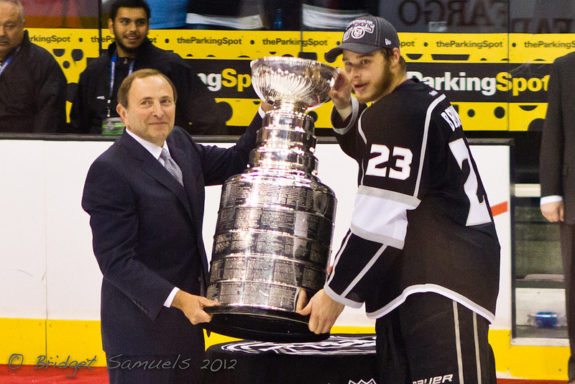
One statistic that is important to understand is “expected goals for percentage,” or xGF%. This statistic works to show if a team is expected to score more or fewer goals than they allow, over the course of a season. If a team has an xGF% above 50%, that means that they are expected to score more goals than they allow. Alternatively, if a team is below 50%, that means they are giving up more scoring chances than they are creating, and thus are expected to allow more goals than they score.
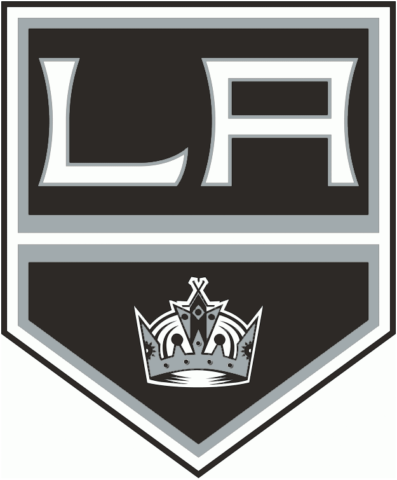
xGF% is a complex statistic, as it puts a probability of scoring on each shot attempt. A breakaway attempt might have a 30% chance at producing a goal. This means the breakaway would add 0.3 expected goals to a team’s total, no matter the result of the breakaway. The cumulation of all one team’s expected goals, and all their expected goals against, is used in the equation to calculate xGF%:
100 * [xGF / (xGF + xGA)]
For much of the decade, the Kings were a possession team. This means they play a style which is conducive to controlling the play of the game, producing a high xGF%. The Kings had an xGF% above 50% in 8 of the 10 seasons last decade.
Analytical statistics, such as xGF and GSAX (goals saved above expected) are retrieved from Evolving Hockey, a fantastic statistical database.
Number 10: 2018-19
It should be no shock to see the 2018-19 season at No. 10. This Kings team was awful in every aspect. They had a measly .433 point percentage, and a 47.12 xGF%. Both of these were the Kings’ worst showings of the decade.
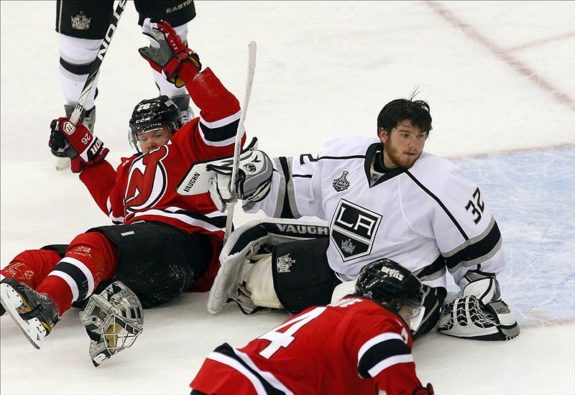
This season was the start of the Kings’ commitment to rebuilding. They traded away Jake Muzzin to Toronto for Carl Grundstrom and a first-round pick, which became stud defenseman Tobias Bjornfot. They also traded Tanner Pearson for Carl Hagelin, and later flipped Hagelin for third and fifth-round picks from Washington.
Related: Kings’ Rebuild Won’t Take Much Longer
The best takeaway from this season was that it was time to begin retooling the franchise for future success. Rather than remaining stubborn, and trying to keep the gang together, Kings management began making tough decisions. Moving on from Muzzin was hard after he played such a big role as a young defenseman. However, Tobias Bjorfot will be an excellent replacement.
Number 9: 2019-20
The Kings followed up an ugly 2018-19 campaign with a similar effort. If not for a seven-game winning streak to finish the season, the Kings would have finished last in the Pacific in back-to-back seasons.
This season was less disappointing than the one before, because there were much lower expectations. General manager Rob Blake continued to collect assets while unloading firepower, such as Alec Martinez and Tyler Toffoli.
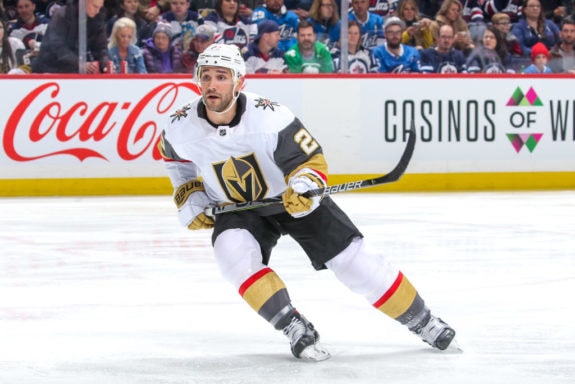
Anze Kopitar led the way with 62 points in 70 games. After Kopitar, there was a large dropoff in scoring. Alex Iafallo was second in scoring with 43 points in 70 games, followed by Dustin Brown and Drew Doughty with 35 points each. No other King scored 30 points. The season was shortened by 12 games due to the global pandemic, but the Kings’ offensive efforts were still extremely poor – they were 30th in the NHL in goals per game, at just 2.53.
Number 8: 2016-17
The Kings missed the playoffs for the second consecutive year in 2016-17. They finished just eight points behind the eventual Western Conference champion Nashville Predators.
Much of their struggles came from a lack of scoring, a common trend for Los Angeles. Jeff Carter led the team with 66 points, followed by Kopitar who scored just 52 points. This was a career-low for Kopitar, not including the lockout-shortened 2012-13 season. The Kings found themselves 25th in goals/game, averaging just 2.43.
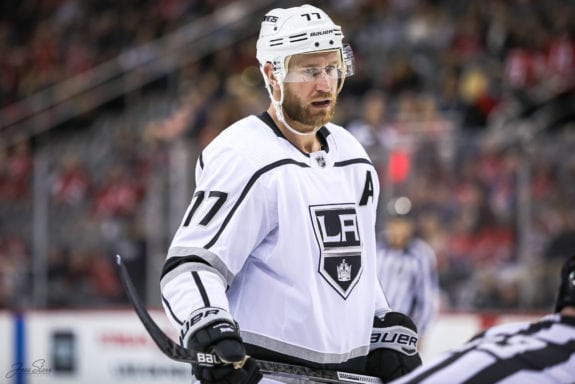
The most surprising statistic that came out of this disappointing season was the Kings’ 53.44 xGF%, which ranked third in the NHL in 2016-17. This suggests that the Kings were getting better scoring chances than their opponents, but were not able to finish as consistently as their opponents.
The real issue this season came in net. Jonathan Quick was excellent when he played, but an injury limited him to just 17 games played. Peter Budaj took on the majority of the minutes, playing 53 games. Jeff Zatkoff and Ben Bishop also saw some time in net, both performing below average according to analytical metrics such as GSAx.
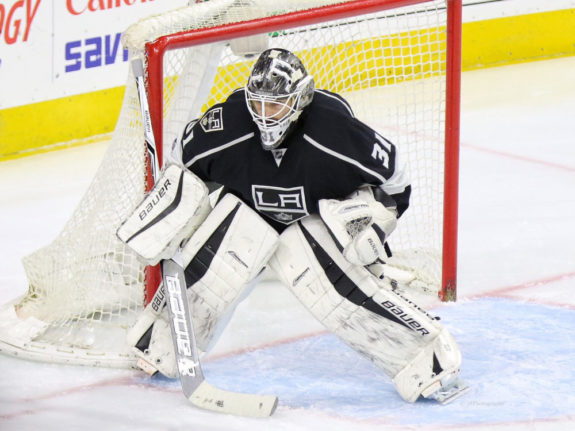
Had Quick stayed healthy this year, the Kings probably would have made the playoffs, and this season would be much higher on the list. However, an unhealthy Quick makes for a weak Kings roster, landing them at No. 8.
Number 7: 2017-18
Simply put, the Kings did not deserve to make the playoffs in 2017-18. After missing nearly all of the prior season, Quick stole the show. The Kings allowed the fewest goals per game in the NHL, winning the William M. Jennings Trophy. Jonathan Quick posted a ridiculous 28.27 goals saved above expected. This means a replacement-level NHL goalie would have been expected to allow more than 28 more goals than Quick did in the campaign.
A look at the Kings’ xGF% paints the same picture. The Kings found themselves at 47.68 xGF%, their second worst of the decade. Darcy Kuemper also played fantastically, stopping 11.14 goals above expected in just 19 games. The Kings couldn’t score this year, but neither could their opponents.
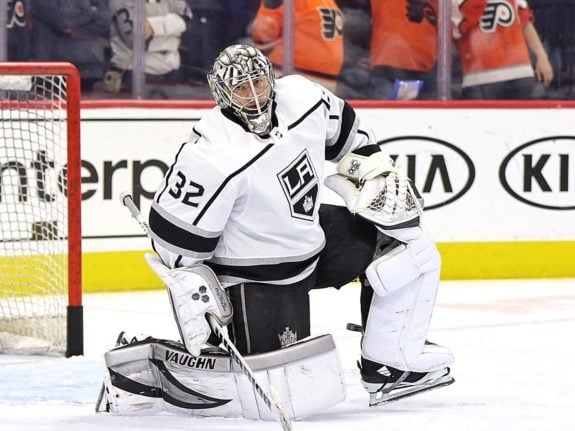
This storyline continued into the playoffs, where the Golden Knights held the Kings to 3 goals in 14 periods. The Kings averaged a measly 0.64 goals/60 minutes in the series. Quick played as well as he could, allowing just seven goals in the series, but it wasn’t near enough.
The Kings get some extra points for the excellent goaltending they enjoyed this season. Even still, this team barely beats out the 2016-17 squad which failed to qualify for the playoffs.
Number 6: 2014-15
The 2014-15 Kings was the best LA team to miss the playoffs. Coming off their second Stanley Cup victory in 2014, the majority of the championship-winning squad was still around.
The Kings had a great xGF% of 54.53, their third-best of the decade. This shouldn’t be surprising, since the Kings had the feel of a very good team this year. Fans and management expected a repeat of the last three years: a deep playoff run. Perhaps the Kings got too content with having above-average regular seasons and then heating up in the playoffs.
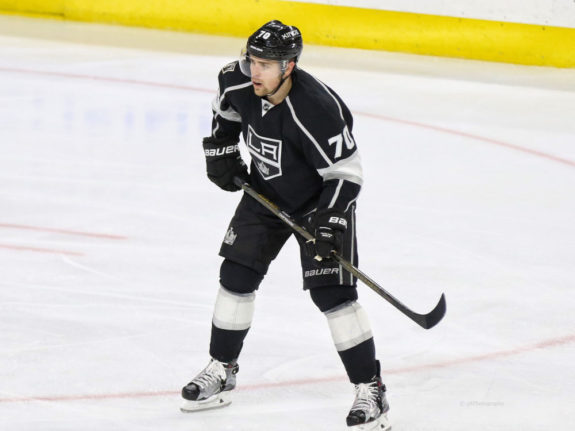
The 2014-15 Kings had seven players score over 40 points, and had a good defensive season as per usual. By all measures, this was a good Kings team. They missed out on the playoffs by just two points, though, to the Calgary Flames. Had they mustered three more regular-season points, they would have finished third in the Pacific and faced a beatable Canucks team in the first round. For this reason, the 2014-15 season should go down as the most frustrating campaign.
Number 5: 2010-11
The 2010-11 Kings looked vastly different from the 2011-12 Kings roster that hoisted the Cup. Wayne Simmonds, Jack Johnson, Brayden Schenn, Marco Sturm, Michael Handzus, and Ryan Smyth were all on the team in 2010-11. None of these players wore a Kings sweater the next season.
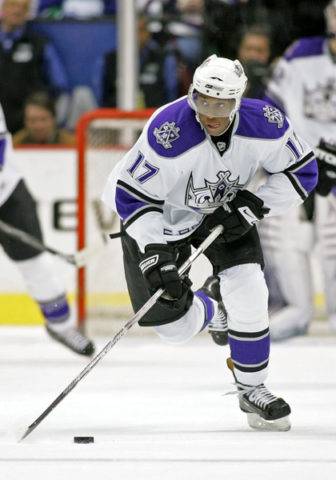
This Kings roster had a ton of talent, but didn’t mesh quite right. After blockbuster trades with Philadelphia and Columbus, the Kings had a new look the next season. But none of that would have happened if not for a promising 2010-11 campaign which proved the Kings were ready to compete.
Related: 5 Greatest Moments in Kings History
This was Drew Doughty’s third year in the NHL, and he was quickly proving himself to be a stud. After a 59-point 2009-10 season, Doughty posted 40 points in 2010-11. While he didn’t live up to his phenomenal sophomore season, he showed that he would be a consistent producer for the Kings.

Doughty wasn’t the only King to excel this season. Quick posted a 2.24 GAA and a .918 SV%, both career-bests at the time. Kopitar put up 73 points in 75 games. While the Kings might have suffered a crushing playoff defeat to Joe Thornton and the San Jose Sharks, they proved that they were ready to contend year in and year out.
Number 4: 2011-12
In 2012 the Kings made a lot of firsts. The Kings won their first ever Stanley Cup. They were the first No. 8 seed to win the Stanley Cup. They also took a 3-0 series lead in every playoff series they played, and lost just one game on the road all playoffs: Game 5 of the Stanley Cup Final.
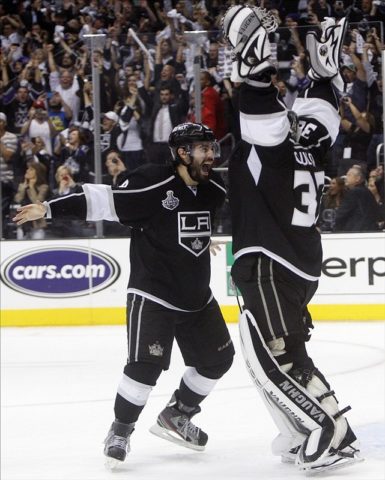
So why isn’t this one of the Kings’ top seasons of the decade? Similar to the 2017-18 season, the Kings overperformed this year due to a God-like effort from Jonathan Quick. In the regular season, Quick had more than 30 goals saved above expected. Considering the Kings were a No. 8 seed in 2011-12, they would not have even made the playoffs if not for Quick.
Number 3: 2015-16
It may seem far fetched that the 2015-16 Kings, who only won a single playoff game, were a better team than the 2011-12 Stanley Cup champions. However, only considering playoff success is a flawed way to evaluate a team.
The 2015-16 Kings had much of their 2014 roster intact, along with Milan Lucic and Vincent Lecavalier. Lucic added 55 points to a strong Kings’ roster, and Drew Doughty had a Norris Trophy-winning season.
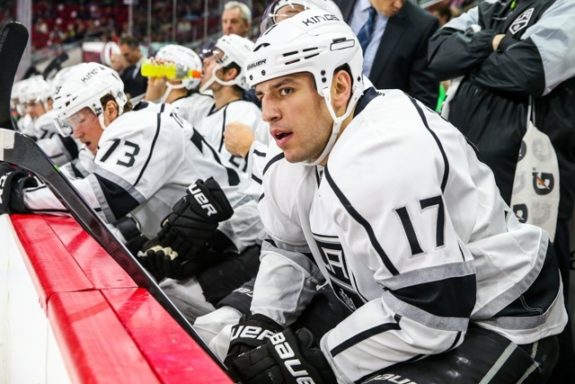
Heading into 2015-16, the last three times the Kings made the playoffs ended in two Stanley Cups and a Conference Final defeat. Needless to say, playoff expectations were high for the Pacific Division’s second seed.
So why did the Kings do so poorly? The answer lies in their opponent: the San Jose Sharks. The Sharks would go on to play the Penguins in the Stanley Cup Final, which is the furthest the club ever advanced. Former King Martin Jones was LA’s kryptonite, holding the Kings to 11 goals in 5 games. Joe Pavelski scored five goals in the series. The Sharks depth outplayed that of the Kings’, getting clutch Game 5 goals from Joonas Donskoi and Chris Tierney. It also didn’t help that Kings’ defenseman Alec Martinez was lost for the series after a Game 1 injury.
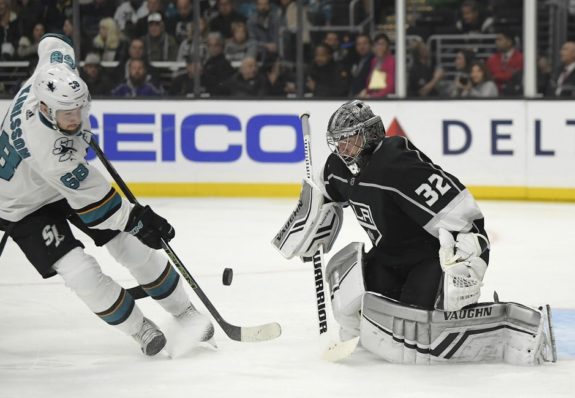
The 2015-16 Kings were a powerful team, and their short five-game playoff stint against the Sharks was not a good representation of their skill.
Number 2: 2012-13
The 2012-13 Kings were sandwiched in between two Stanley Cup victories in 2012 and 2014. The Kings might have won three in a row, if not for their bitter rivals. The 2013 team was the best of three Chicago Blackhawks’ Cup-winning rosters.
Any Kings fan can remember the Patrick Kane Game 5 overtime winner, followed by his “heartbreaker” celebration, that ended their 2012-13 season. What they might forget is that the Kings boasted an impressive 55.63 xGF% in the regular season, their best of the decade– and the best in the NHL.
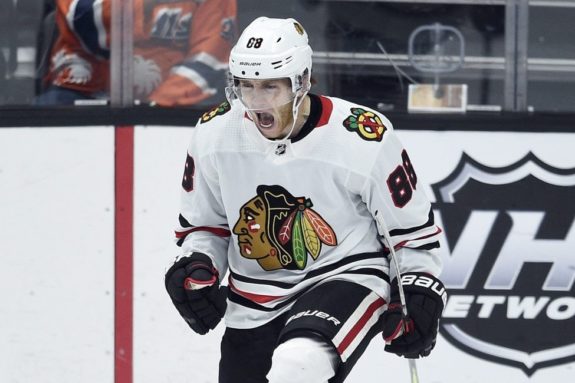
Led by Kopitar, the 2012-13 Kings finished second out of five in their division – this was the last season before the division realignment. Typically, defending Stanley Cup champions can blame a disappointing season on a “Stanley Cup hangover.” Since the 2012-13 season was delayed by a lockout, this doesn’t quite apply. That said, this season was nothing to be ashamed of. The defending Cup champions proved they were not a one-hit wonder.
The sting of losing to the Blackhawks was painful. Luckily, the Kings wouldn’t have to wait long to get their revenge.
Number 1: 2013-14
There is no question that the 2013-14 Kings were the best of the decade. The eventual Cup champions posted a 55.4 xGF%, and finished third in the newly revised Pacific Division. Young guns Tyler Toffoli and Tanner Pearson chipped in offensively, and three different goalies played 19 or more games: Quick, Jones, and Ben Scrivens. When Quick went down with an injury, Jones went on a record-breaking streak to keep the Kings in the playoff race.
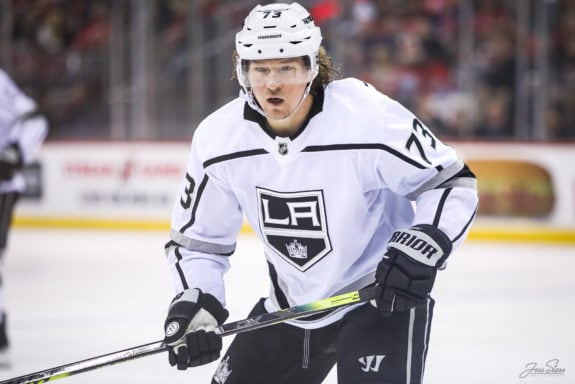
The Kings were very good in the regular season, but even better in the playoffs.
Related: Revisiting the 2014 Stanley Cup Final – Kings vs Rangers
Marian Gaborik was acquired at the trade deadline, and nearly won the Conn Smythe Trophy for most valuable player in the playoffs. Justin Williams cemented himself as Mr. Game 7 this year, showing up again and again when the Kings needed him most.
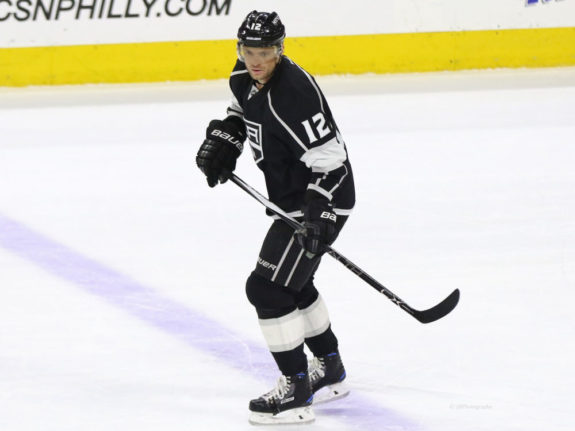
The Kings also overcame tremendous adversity, including an early 3-0 series lead held by the Sharks in Round 1. While it doesn’t prove their skill, the 2013-14 Kings had a flair for the dramatic. Alec Martinez scored a Game 7 overtime goal against the reigning champion Blackhawks, giving them the sweet payback they deserved. Martinez didn’t stay out of the limelight for long, as he would score a double-overtime goal in Game 5 against the Rangers to win the Stanley Cup.
Looking Ahead
The Kings have long been a defensive, possession-based team. When they get offense, the Kings are hard to stop– especially with a healthy Jonathan Quick.
Unfortunately, the days of leaning on Quick are over. A new style of hockey is taking over in the Staples Center. The good news is, the Kings’ young prospects should bring a flair of offense that has long been missed.
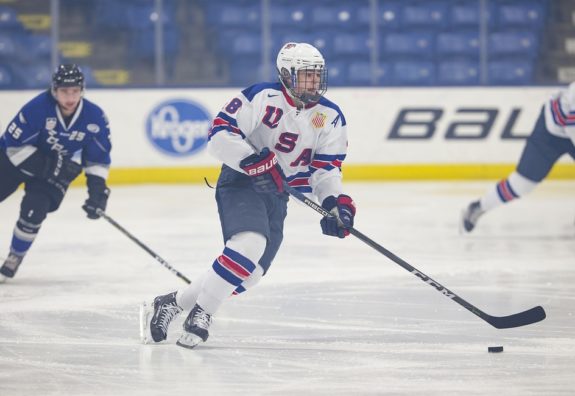
The Kings may be a few years away from repeating the glory years of 2012 to 2014, but it is still an exciting time for the organization. Things are trending up in L.A., and one day the Kings will be kings once again.